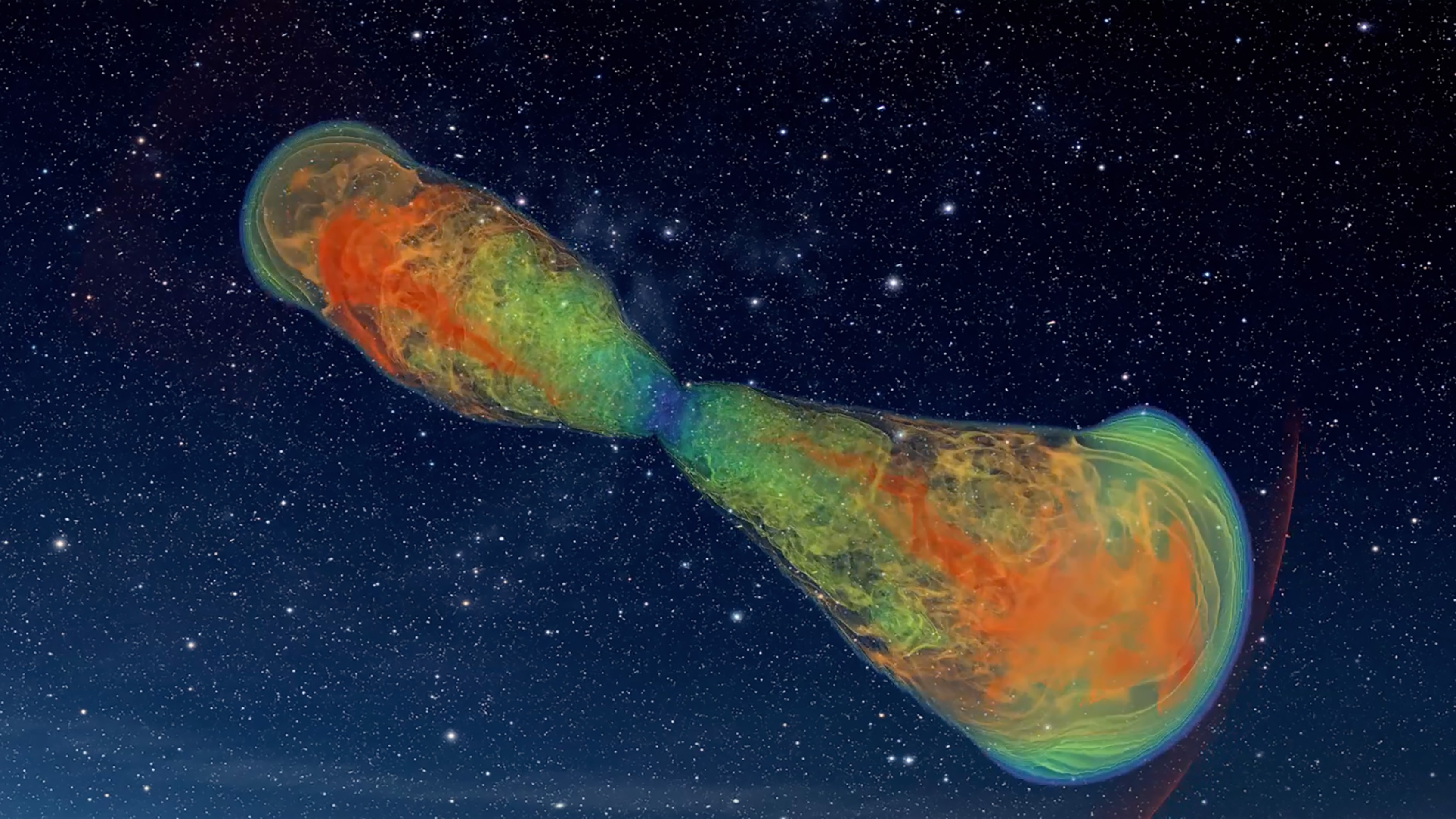Dying stars build humongous 'cocoons' that shake the fabric of space-time
New simulations show that dying stars release enormous "cocoons" of gas that may rattle with space-time ripples called gravitational waves.

Since the first direct detection of the space-time ripples known as gravitational waves was announced in 2016, astronomers regularly listen for the ringing of black holes across the universe. Projects like the Laser Interferometer Gravitational-Wave Observatory (better known as LIGO) have detected almost 100 collisions between black holes (and sometimes neutron stars), which shake up the fabric of the cosmos and send invisible waves rippling through space.
But new research shows that LIGO might soon hear another kind of shake-up in space: cocoons of roiling gas spewed from dying stars. Researchers at Northwestern University used cutting-edge computer simulations of massive stars to show how these cocoons may produce "impossible to ignore" gravitational waves, according to research presented this week at the 242nd meeting of the American Astronomical Society. Studying these ripples in real life could provide valuable insight into the violent deaths of giant stars.
Related: What's the biggest black hole in the universe?
As massive stars run out of fuel, they collapse into black holes, throwing out huge jets of ultra-fast-moving particles at the same time. The team of astronomers simulated these end stages of a star's life, thinking the jets may lead to gravitational waves — but something else took center stage.
"When I calculated the gravitational waves from the vicinity of the black hole, I found another source disrupting my calculations — the cocoon," lead researcher Ore Gottlieb, an astronomer at Northwestern's Center for Interdisciplinary Exploration and Research in Astrophysics, said in a statement. The cocoon is a turbulent blob of gas, formed when the collapsing star's outer layers interact with the high-powered jets released from within. To produce gravitational waves, you need something massive moving around asymmetrically, just like the roiling material of the cocoon.
"A jet starts deep inside of a star and then drills its way out to escape," Gottlieb said. "It's like when you drill a hole into a wall. The spinning drill bit hits the wall and debris spills out of the wall. The drill bit gives that material energy. Similarly, the jet punches through the star, causing the star's material to heat up and spill out. This debris forms the hot layers of a cocoon."
According to Gottlieb's calculations, the ripples created by the cocoon should be easily detectable by LIGO during its next set of observations. Plus, cocoons emit light, so astronomers can obtain information about them with gravitational waves and telescopes at the same time — an exciting feat known as multi-messenger astronomy.
Sign up for the Live Science daily newsletter now
Get the world’s most fascinating discoveries delivered straight to your inbox.
If LIGO does observe a cocoon in the near future, it's sure to be an interesting new look into the insides of stars and the ends of their lives. It could also be the first time that LIGO manages to detect gravitational waves from an individual object, rather than from the interactions between two binary objects orbiting each other.
"As of today, LIGO has only detected gravitational waves from binary systems, but one day it will detect the first non-binary source of gravitational waves," Gottlieb said. "Cocoons are one of the first places we should look to for this type of source."
The team's research has yet to be published in a peer-reviewed journal.

Briley Lewis (she/her) is a freelance science writer and Ph.D. Candidate/NSF Fellow at the University of California, Los Angeles studying Astronomy & Astrophysics. Follow her on Twitter @briles_34 or visit her website www.briley-lewis.com.









